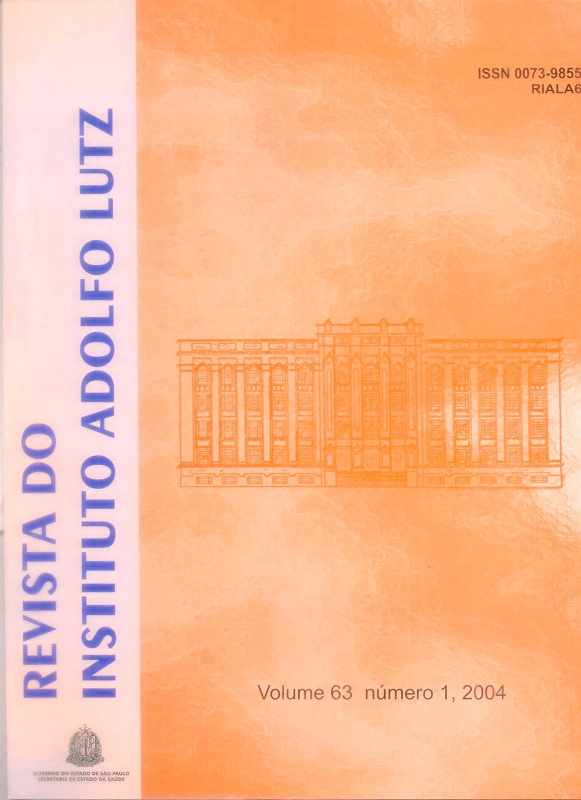Resumo
The best serological test for leptospirosis laboratory
diagnosis remains the microscopic agglutination test (MAT).
Because of the complexity of MAT, we have been developed
some rapid screening tests for leptospiral antibodies detection
in the acute phase of infection. In the decade of 80, a passive
hemagglutination test employing polysaccharide fractions of
leptospires was considered appropriate for early diagnosis,
but its antigen preparation included “common antigens”
recognized by antibodies from 4% of healthy individuals. A
new ELISA (enzyme-linked immunosorbent assay) employing
proteinase K resistant immunodominant antigens was
developed and its potential diagnosis evaluated. This
technique, the PK-ELISA, presented 89.9% sensitivity and
97.4% specificity, and satisfied the requeriments needed for
serological screening tests of human leptospirosis. However,
some of the reagents used in its antigen preparation are
imported and very unstable. So, it was proposed, in a
“Cooperative Research Accordance” between Instituto Adolfo
Lutz and Laboratório Fleury, to try new approaches with
monoclonal antibodies. Two hibridomas secreting specific
monoclonal antibodies (MAb) were selected: one, against an
epitope detected in 16 of 23 members of the genus Leptospira
(clone A12P4) and the other, specific to the icterohaemorragiae
serogroup (clone H7P1). The MAb A12P4, a G2 (IgG2B)
immunoglobulin, reacted with an epitope present in the 16-18
kDa components of icterohaemorragiae serogroup and with
the 75-84 kDa components of serovars copenhageni and
canicola, after whole-cell lysates of the leptospires were
separated by sodium dodecyl sulfate- polyacrylamide gel
electrophoresis. The MAb H7P1, which is an IgG, reacted with
an epitope common to several fractions of molecular weight
above 21 kDa of strain RGA and with the 21-22 kDa and the 75-
82 kDa components of strain M-20. Both monoclonal antibodies
were employed in enzyme immunoassays for detecting specific
antibodies in serum samples serially colleted from 52 patients
with leptospirosis, and from the control group, which consisted
of sera from 57 patients with other diseases included in the
tests, however, were not satisfactory. A new ELISA was
developed in the present study employing an antigen
suspension “AgMc”, purified by affinity chromatography with
CNBr-activated Sepharose 4B coupled to the monoclonal
antibodies described above. The results obtained with this
test were compared to the MAT and to the classical IgM ELISA
(ELISA c). The new method, “AgMc ELISA”, presented
serological indices, relatively to reference test MAT, of 80.70
% and 83.33 % of sensitivity and specificity, respectively;
positive and negative predictive values of 69.70 % and 90.10
%, respectively, and general agreement index of 82.49 %. So,
this test was not considered a promising approach to rapid
diagnosis of human leptospirosis. Moreover, the proportion
of patients diagnosed as having leptospirosis by the “AgMc
ELISA” and the MAT differ significantly. The possible
explanations for the results obtained are discussed.

Este trabalho está licenciado sob uma licença Creative Commons Attribution 4.0 International License.
Copyright (c) 2004 Ribeiro, M. A.
